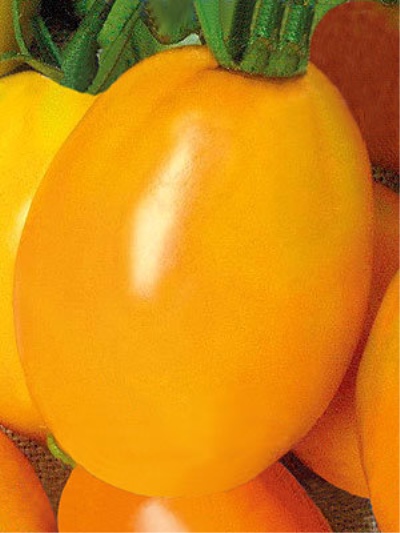
- Authors: Ognev V.V., Khovrin A.N., Maksimov S.V., Tereshonkova T.A. (LLC "Vereya")
- Year of approval: 2015
- Category: grade
- Growth type: indeterminate
- Appointment: fresh consumption
- Ripening period: mid-season
- Ripening time, days: 115-120
- Growing conditions: for open ground, for film greenhouses
- Bush size: tall
- Bush height, cm: 150-200
Promising by its very name, a new variety of tomatoes, for sure, would like to try to grow many farmers. But even this attractive culture can produce dismal results. Therefore, it is extremely important to make everything clear, and start by studying its features.
Breeding history
The development of the Gold of the East was carried out at the breeding grounds of Vereya LLC. The plant was allowed to be massively used in gardens in 2015. Breeders such as:
- Ognev;
- Khovrin;
- Maximov;
- Tereshonkova.
Description of the variety
Tomato bushes Gold of the East are tall and can reach 1.5-2 m. Large leaves develop on them. This foliage is characterized by a dark green color. The plant is recommended for growing in various types of greenhouses. It will form indeterminate bushes, the growth of which will need to be limited specifically.
The main qualities of the fruit
Newly emerged berries of this variety will invariably be green. The ripe crop acquires an orange color. Other features:
- average weight - from 0.12 to 0.2 kg;
- 5 or 6 tomatoes per brush;
- laying in simple inflorescences;
- articulated stalk type;
- the shape of a simple ellipse.
Taste characteristics
The harvested crop is mainly consumed fresh. The pulp cannot boast of a special density. At the same time, it is tender and juicy. The smooth skin does not leave an unpleasant impression.
Ripening and fruiting
The gold of the East is classified as a mid-season tomato. Normally, it will ripen in 115-120 days. You can pick berries from the bushes in July and August. But sometimes, for various objective reasons, these terms change.
Yield
In the official description, the productivity is indicated at the level of 5.9 kg per 1 sq. m. In each case, it can be quite different. We will have to pay attention not only to the weather, but also to the perfection of agricultural techniques.
The timing of planting seedlings and planting in the ground
Prepare containers with a substrate and use them in March. The specific term is chosen independently. But too much delay in landing is hardly justified. With the normal development of seedlings, transshipment into the ground can be carried out in May or June. In the same way, one must focus on the actual state of the plants.

Growing tomato seedlings is an extremely important process, because it largely depends on whether the gardener will be able to harvest at all. All aspects must be taken into account, from seedbed preparation to planting in the ground.
Landing scheme
Suppliers of planting material especially emphasize that it is not allowed to plant more than 2 bushes per 1 m2. Therefore, it is recommended to place them according to the rule of 700x600 mm. Searching for other options is almost meaningless.

Growing and care
The cultivation of this variety does not carry anything unusual. All bushes of the Gold of the East are recommended to be fixed on reliable supports. It is better if this is not something handicraft, but a special trellis. The formation of plants is carried out in 1 or 2 trunks. The choice between these options is determined by the local climate and horticultural experience.
As soon as 4 to 6 brushes are formed, the growth point must be pinched. Sideways growing shoots are harvested every week. The outgrowth of stepchildren is highly undesirable. Water, weed and feed the tomato on the same schedule as most of its other varieties. Unripe fruits are removed together with the stalks; then they ripen well at room temperature.
The normal development of the crop is possible only with an abundant supply of heat. Good lighting is also a very important condition for success. Growth stimulants sometimes have to be used in greenhouses. Without their use, it is very likely that the plants will not bloom. It is necessary to understand that such a culture has not yet been sufficiently studied by plant breeders-practitioners and can present some surprises.




A plant needs different micronutrients at each stage of growth. All fertilizers can be divided into two groups: mineral and organic. Folk remedies are often used: iodine, yeast, bird droppings, eggshells.
It is important to observe the rate and period of feeding. This also applies to folk remedies and organic fertilizers.


Growing regions
This tomato is good for the entire territory of Russia, except for the regions of the Far North and those equated to them. Therefore, it can be safely recommended to gardeners:
- The Far East;
- Siberian and North Caucasian regions;
- Volga region;
- Ural;
- the European part of Russia.

























































































